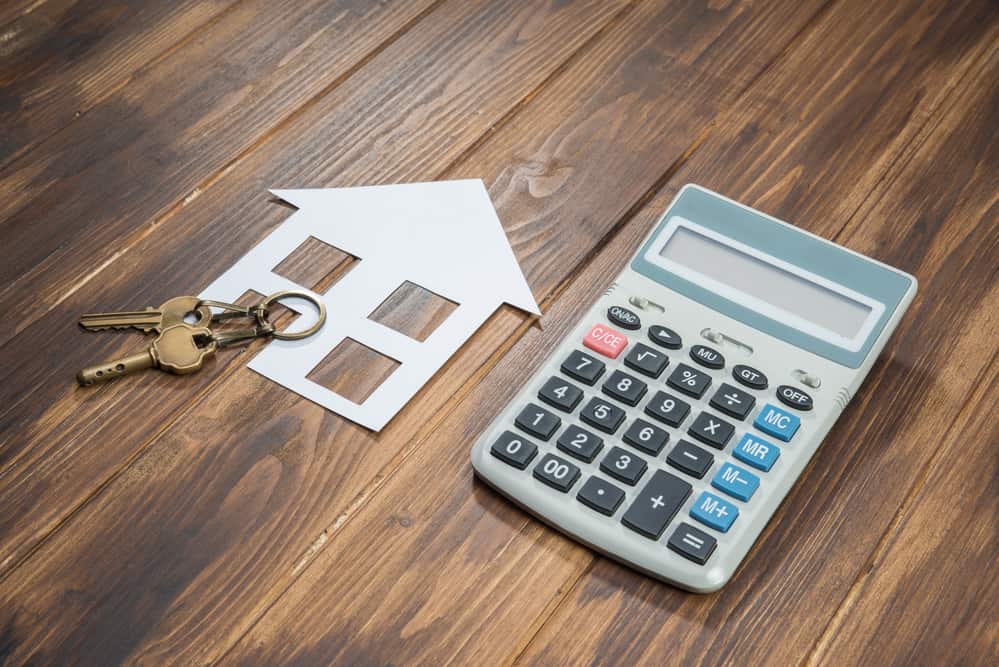What is a wraparound mortgage? |How wraparound mortgages work |Wraparound mortgage example | Wraparound mortgage pros & cons | Alternatives to wraparound mortgages
Real estate investors often find it helpful to have a wide range of financing options on hand. Not only do traditional lenders have stringent eligibility requirements, but the approval and closing process can sometimes take too long to nab a deal. This is where investors find alternative financing options can prove helpful. One unique financing option is the wraparound mortgage. Have you ever heard of it before? Read on to find out all about how this type of mortgage can fit into an investor’s financing toolkit:
What Is A Wraparound Mortgage?
A wraparound mortgage, commonly referred to as a ‘wrap loan,’ is a category of loan that encompasses the outstanding debt due on a property, plus the amount that covers the new purchase price (hence the phrase ‘wrap around mortgage’). Wraparound mortgages are considered a type of junior loan, or second mortgage, as the loan is taken out while using the same property as collateral. However, there are subtle differences between a wraparound mortgage and a secondary mortgage that we’ll explain later.
How Does A Wraparound Mortgage Work?
In a traditional scenario, the buyer purchases the home by taking out a mortgage through a lender. The lender is typically a financial institution, such as a bank or other mortgage company. The seller uses the sale proceeds to pay off any remaining mortgage on the home.
A wraparound mortgage strays from this traditional financing model. In this case, the seller acts as the lender and offers financing directly to the buyer. They keep the existing mortgage on the home and use payments from the buyer to pay it off. The seller often charges a higher interest rate on the loan and pockets a profit from each installment.
To facilitate the wraparound mortgage, both the buyer and the seller must agree on a down payment, interest rate, and loan amount. They’ll both sign a promissory note that lays out the term of the wrap loan. They’ll also sign over the title and deed from the seller to the buyer.
Once this process is complete, the seller no longer owns the home. However, they are responsible for taking monthly payments from the buyer and making payments on the original mortgage. If the seller fails to make mortgage payments, the original lender retains the right to foreclose on the property.
[ Thinking about investing in real estate? Register to attend a FREE online real estate class and learn how to get started investing in real estate. ]

Wraparound Mortgage Example
A wraparound mortgage is one of the many creative real estate financing strategies that an investor can incorporate into their arsenal. A version of seller financing, wraparound mortgages allow buyers to make mortgage payments directly to the seller of a property, instead of taking out a conventional mortgage.
In this scenario, the seller will typically extend the wraparound loan to the buyer, which will be used to pay off any outstanding balance on the original mortgage, plus the remaining balance on the purchase price. More specifically, the buyer will make monthly payments to the seller, who will then use the money to make payments on the original mortgage to their lender. The specific wraparound mortgage definition and terms are specified in the form of a secured promissory note. Because it can be tricky to wrap one’s head around the idea of “what is a wraparound loan,” the following is an example:
Mr. Homeowner recently listed his home on the market for $500,000. He still has a remaining balance of $300,000 on his mortgage at five percent interest, making his payments roughly $1,600 per month. Mr. Investor comes along and offers to put $50,000 down. Mr. Homeowner and Mr. Investor agree to finance the remaining $450,000 through a wraparound mortgage at 6 percent. Moving forward, Mr. Investor sends Mr. Homeowner a check for roughly $2,600 per month.
How Common Are Wraparound Mortgage Loans?
Wraparound mortgages are not common, and this is mostly because the original lender has to sign off on this secondary form of financing. If the lender requires that the original loan is paid off before the seller is eligible to sell the home, then a secondary or junior mortgage may not be feasible.
The popularity of wraparound loans increases or decreases along with the housing market. When interest rates are low, demand for wraparound mortgages is also low. This is because buyers with lower-than-average credit scores or income levels usually face high interest rates. When interest rates are low, they have a better chance of qualifying for a traditional loan.
However, when interest rates are high, there may be more demand for unconventional financing. Buyers may want to take advantage of a wraparound mortgage when they can’t qualify for a traditional mortgage. They also might opt for a wrap loan when the interest rate is better than what they could get on the primary mortgage market.
It’s also necessary to consider seller incentives. In a seller’s market, a seller will easily find buyers and lucrative offers. They may only be interested in offering seller financing in a buyer’s market and are looking to increase their options.
Wraparound Mortgage Vs. Second Mortgage
Both wraparound mortgages and second mortgages are types of seller financing. With a second mortgage, the interest rate is higher and the borrowed amount is lower, relative to the original mortgage. Although wraparound mortgages are often referred to as a type of second mortgage, there are some subtle differences.
A good way to understand the difference is to look at what happens to the original loan’s balance due. A wraparound mortgage includes the original mortgage payment that is rolled into the wrap loan payment. The balance due on the original mortgage remains the same. In contrast, the original mortgage balance and new selling price are combined with the second mortgage to create a new outstanding balance.

Wraparound Mortgage Risks & Benefits
When considering a wraparound financing deal, or any method of financing for that matter, investors measure the pros and cons. For example, when reading the example above, one may have noticed that the seller has a strong incentive to pocket a profit each month through a higher interest rate. However, this still may present a better scenario to many buyers, especially as an alternative to financing through a traditional lender. Read on to learn more about the potential risks and benefits for buyers when using a wrap around mortgage.
Risks Of Wraparound Mortgages
Of course, with any type of investment scenario, there is always a certain level of risk that is associated. Be sure to review the following implications before pursuing a wraparound mortgage deal:
-
Risk of foreclosure if the seller does not use payments towards the original mortgage.
-
The seller has an incentive to charge a higher interest rate to the buyer.
-
In the case of a foreclosure, the payoff of the original mortgage will be prioritized.
-
The seller’s lender can demand repayment in full if the property is sold.
Benefits Of Wraparound Mortgages
The main benefit of a wraparound mortgage is the ability for an investor to purchase property, even if they have poor credit. Wraparound financing is an arrangement made directly between the buyer and the seller, creating a space for negotiable terms and faster decision-making:
-
Option to purchase property even with bad credit.
-
Ability to avoid having to go through a traditional lender.
-
Faster purchase process with negotiable terms.
Alternatives To Wrap-Around Loans
If you’re a buyer coming up against some obstacles surrounding a conventional loan, wraparound loans may come across your path. However, know that there are alternatives that you can choose from, including FHA, VA, and USDA loans.
The Federal Housing Administration (FHA) backs mortgage loans for first-time homebuyers and other buyers who wouldn’t typically qualify for a conventional mortgage. This is a great place to start if you have a less-than-stellar credit score or don’t have enough cash on hand for a down payment. With an FHA loan, you could have a credit score of 580 and put down a 3.5 percent down payment. If your score is closer to 500, you can put down as little as 10 percent. With relatively low interest rates and down payments, the FHA loan provides housing accessibility for many Americans.
Are you active in the military or have veteran status? Thank you for your service. You may be pleased to find out that you don’t have to put in a down payment for your house. Using a VA loan, you can enjoy low interest rates that don’t require private mortgage insurance. These loan terms provide a great opportunity to get your start in passive income investing!
If your desire for ownership is strong, perhaps it’s strong enough for you to move to a rural area. By obtaining a USDA loan, you can qualify for a home purchase that doesn’t require a down payment. You can also enjoy a low interest rate and lower rates on your private mortgage insurance, which you can roll into your loan amount. Maybe moving to a rural area isn’t such a bad tradeoff!
Summary
A wraparound mortgage is a type of junior loan or secondary mortgage that allows buyers to purchase a property without going through a traditional lender. Depending on the terms negotiated directly between the seller and the buyer, the buyer will typically pay a monthly mortgage amount directly to the seller, typically at a higher interest rate than the seller’s original mortgage on the property. This way, the seller is incentivized by the ability to pocket a monthly profit between their original mortgage payment and the wraparound mortgage payment. Buyers are incentivized by the ability to finance a property purchase, even if they would not have been qualified if they were to go through a traditional lender. There are both risks and benefits that both parties should consider before going into a deal.
Ready to start taking advantage of the current opportunities in the real estate market?
Click the banner below to take a 90-minute online training class and get started learning how to invest in today’s real estate market!


